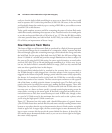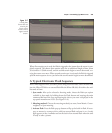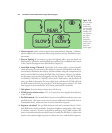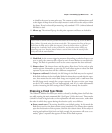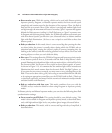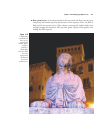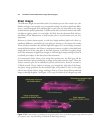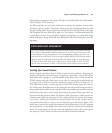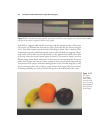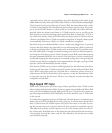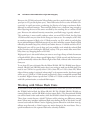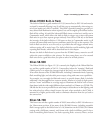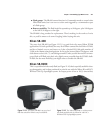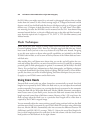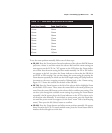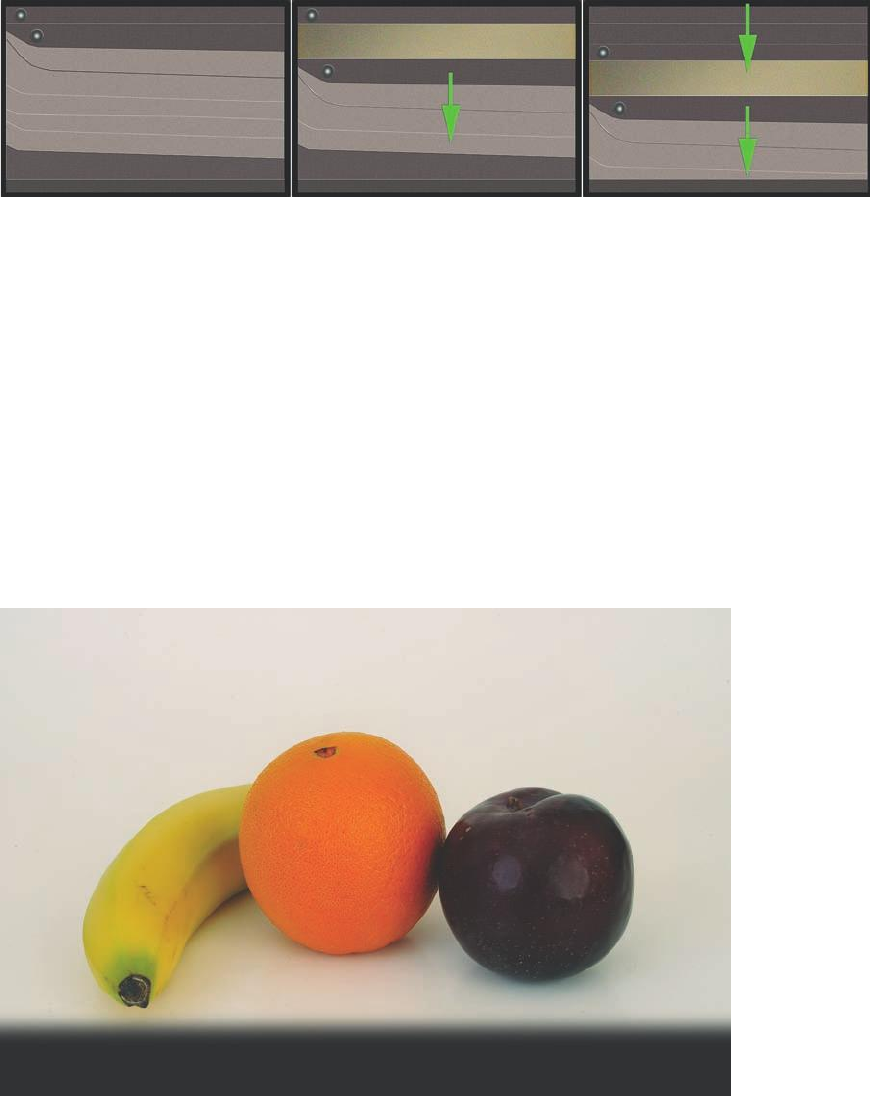
If the flash is triggered while this slit is moving, only the exposed portion of the sensor
will receive any illumination. You end up with a photo like the one shown in Figure
12.12. Note that a band across the bottom of the image is black. That’s a shadow of the
second shutter curtain, which had started to move when the flash was triggered. Sharp-
eyed readers will wonder why the black band is at the bottom of the frame rather than
at the top, where the second curtain begins its journey. The answer is simple: your lens
flips the image upside down and forms it on the sensor in a reversed position. You never
notice that, because the camera is smart enough to show you the pixels that make up
your photo in their proper orientation during picture review. But this image flip is why,
if your sensor gets dirty and you detect a spot of dust in the upper half of a test photo,
if cleaning manually, you need to look for the speck in the bottom half of the sensor.
David Busch’s Nikon D7000 Guide to Digital SLR Photography416
Figure 12.11 A closed shutter (left); partially open shutter as the first curtain begins to move downwards (middle);
only part of the sensor is exposed as the slit moves (right).
Figure 12.12
If a shutter
speed faster
than 1/250th
second is used,
you can end up
photographing
only a portion
of the image.



